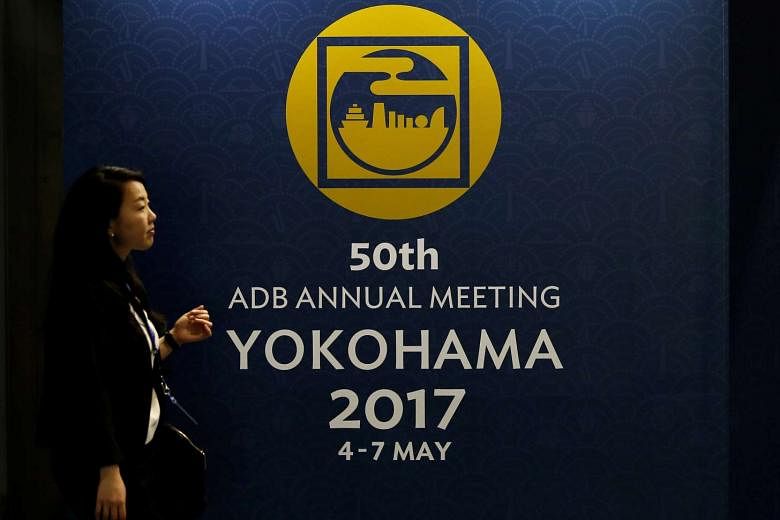The 1997 Asian financial crisis led to closer economic ties that will put the region in good stead to weather shocks and a rise in protectionism, a new report has said.
The crisis was a "landmark event" for the Asean Plus Three economies - comprising the 10 Asean nations and China, Japan and South Korea - that spurred intra-regional integration in trade and investment and led to systems to ease the impact of global threats.
One example is the Singapore- based Asean+3 Macroeconomic Research Office (Amro), which launched yesterday's economic outlook report on the sidelines of the four-day 50th Asian Development Bank (ADB) board of governors' meeting in Yokohama.
Amro is seen as the Asian version of the International Monetary Fund and has been described by Singapore Finance Minister Heng Swee Keat as an "early warning mechanism" that can provide policy recommendations to avert crises.
It also supports the implementation of the Chiang Mai Initiative, a safety net that started as a series of bilateral deals before it became a US$240 billion (S$336 billion) multilateral pact. It serves as a joint reserve that provides loans for countries in financial trouble.
At a separate panel yesterday, Japanese State Minister of Finance Minoru Kihara noted that the Asian financial crisis had "enhanced solidarity in Asia and brought resilience to its financial markets".
A resolve towards multilateral ties helped ease the impact of the 2008 global financial crisis and the European Union debt crisis on Asia, he said. To ride out economic uncertainties, financial cooperation - through remaining open to free trade, foreign direct investment and capital flows - will be key.
Amro chief economist Hoe Ee Khor said Asia has benefited from globalisation and can take the lead to "integrate and be a voice for open free trade systems" via the Asean Economic Community of 2015, which envisions Asean as a single market, and the 16-nation Regional Comprehensive Economic Partnership free trade pact.
He called on policymakers to ensure robust social safety nets to mitigate the impact of the so-called fourth Industrial Revolution of artificial intelligence, robotics and the Internet of Things that is expected to create job redundancy.
Separately, ADB president Takehiko Nakao told a news conference that the region should continue its efforts to lower trade barriers.
The Japan-led ADB and China-led Asian Infrastructure Investment Bank (AIIB) are not competitors, he said, and must work together to address the massive infrastructure needs in the region.
The ADB estimates a US$26 trillion investment is required to meet Asia's infrastructure demands from last year to 2030.
Since the AIIB's launch in 2015, the two lenders have co-financed three infrastructure projects in Pakistan, Bangladesh and Georgia.
Correction note: In an earlier version of the story, it was stated that Amro runs the Chiang Mai Initiative. This is incorrect. The office supports its implementation. We are sorry for the error.

